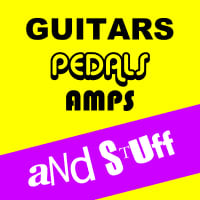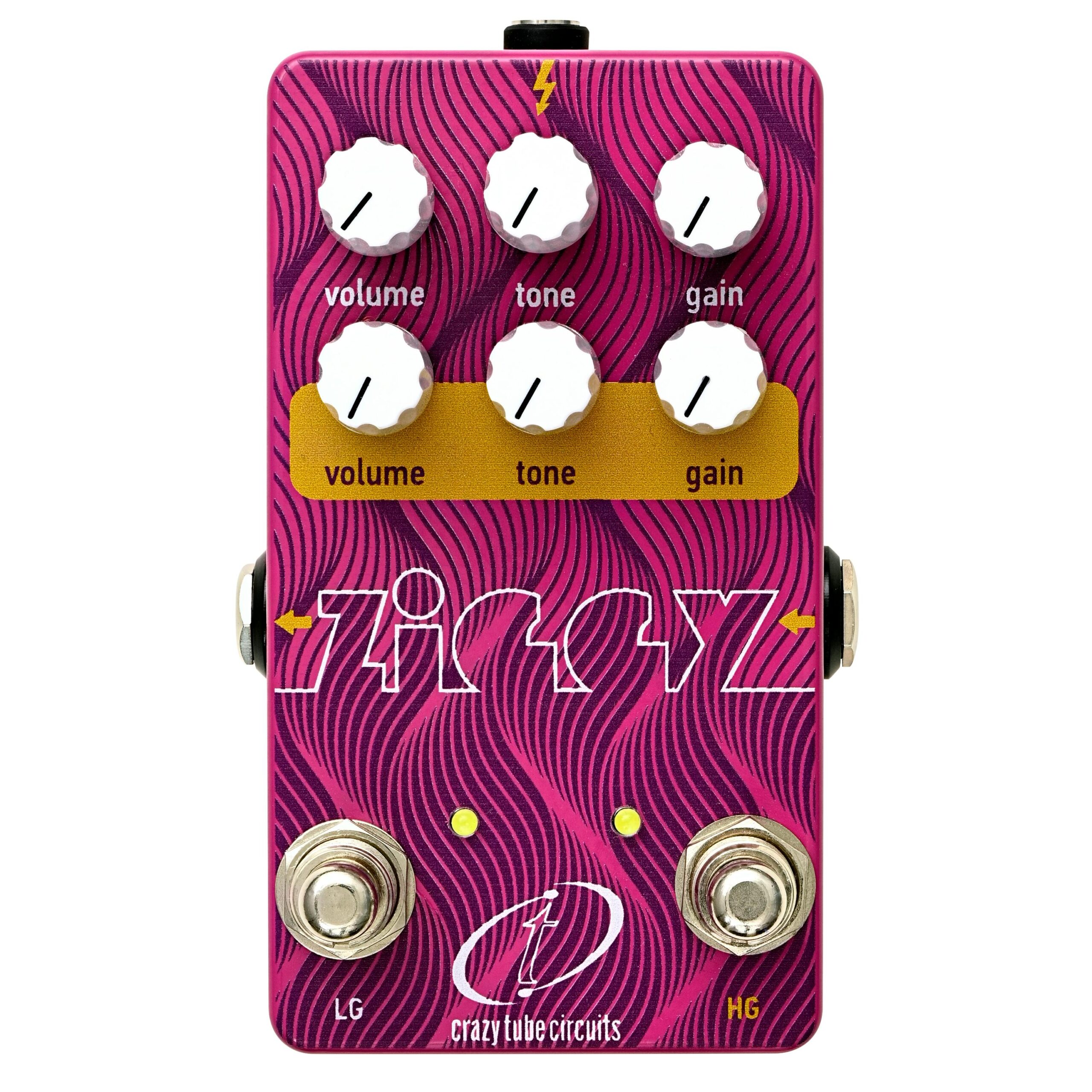Distortion is a guitar effect that alters the signal’s waveform, creating a gritty, aggressive sound characterized by a high level of harmonic content and sustain. It’s achieved by amplifying the input signal to the point where the amplifier or pedal’s circuitry begins to clip, causing the waveform to become squared off and jagged. This clipping produces harmonics that weren’t present in the original signal, resulting in the characteristic “gritty” or “dirty” tone associated with distortion. Distortion pedals typically feature controls for adjusting the amount of gain or distortion applied, as well as tone-shaping knobs to tailor the sound’s frequency response. Distortion is widely used in rock, metal, and punk music to add power, aggression, and sustain to guitar solos, riffs, and rhythm parts, creating a bold and intense sonic impact in the mix. Popular distortion pedals include the Boss DS-1, Pro Co Rat, and Electro-Harmonix Big Muff Pi.
Guitar FX (effects) refer to the wide range of pedals and processors that shape and manipulate a guitar’s signal to create different sounds. From classic distortion and overdrive to reverb, delay, modulation, and pitch-shifting, effects are at the heart of a guitarist’s creative toolkit. Whether analogue or digital, stompbox or multi-effects unit, Guitar FX allow players to express mood, texture, and dynamics in unique ways. Used thoughtfully, they can transform a simple riff into something atmospheric, aggressive, or entirely otherworldly.
Overdrive is a type of guitar effect that simulates the natural distortion that occurs when a tube amplifier is pushed beyond its clean limit. Overdrive pedals achieve this by boosting the input signal of the guitar, causing the amplifier to saturate and produce a warm, saturated, and crunchy sound.
Overdrive pedals are commonly used in various styles of music, including rock, blues, and punk, to add grit, sustain, and harmonic richness to the guitar’s sound. They are versatile tools that can be used to achieve a wide range of tones, from subtle breakup to full-on distortion, depending on the settings and the amplifier being used. Some classic examples of overdrive pedals include the Ibanez Tube Screamer, the Boss OD-1, and the Fulltone OCD, among others
A pedal is a compact device that guitarists use to alter their instrument’s sound by shaping effects such as distortion, delay, reverb, and modulation. Typically housed in a rugged enclosure and controlled by footswitches, pedals are designed to be placed on the floor for hands-free operation during playing. They can be analogue or digital, true bypass or buffered, and come in countless varieties to suit different styles and preferences. Pedals are essential tools for creating signature tones and adding colour and texture to a guitarist’s sound.
Tube refers to vacuum tube technology used in guitar amplifiers to amplify the signal. Tube amps are celebrated for their warm, rich, and dynamic tone, producing natural overdrive and smooth distortion when pushed. They respond sensitively to a player’s touch and playing style, offering expressive sound shaping that many musicians prefer. Although tube amps require more care and maintenance than solid-state models, their classic sound and feel keep them popular among guitarists worldwide.
We have new and used Crazy Tube Circuits musical equipment available on our website for fast direct delivery from sellers across the UK & Europe.




